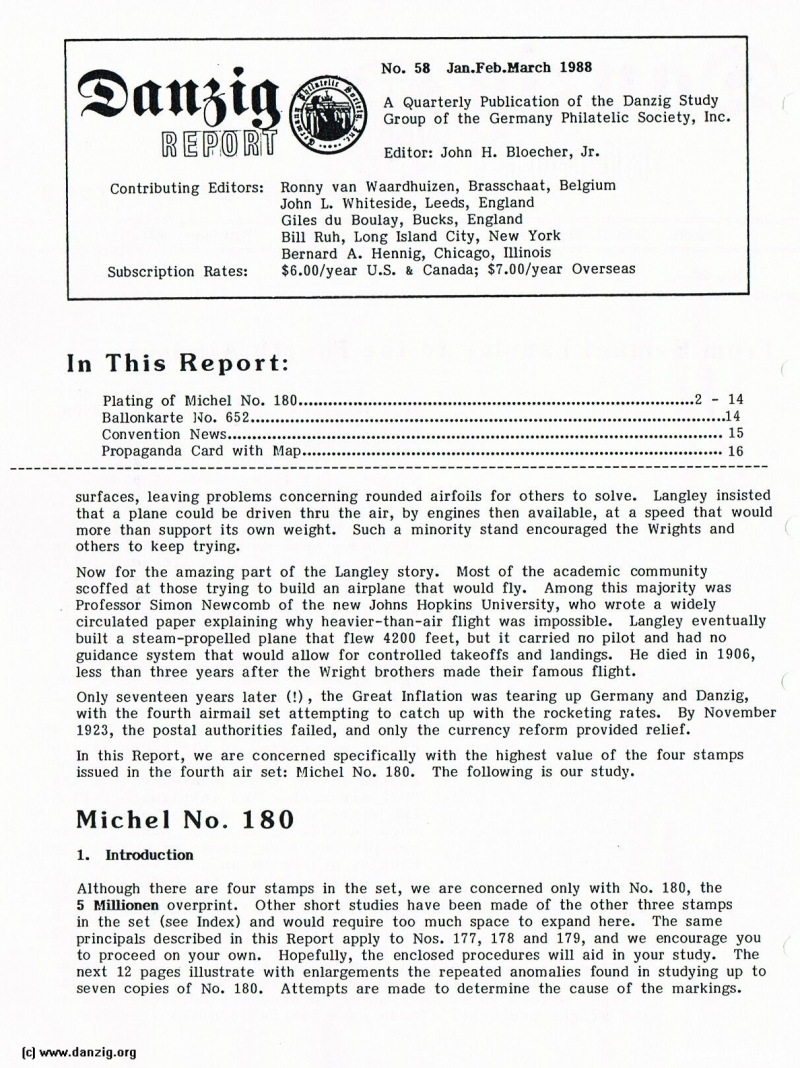
From Samuel Langley to the Fourth Air Issue
In This Report:
Plating of Michel No. 180 ............................................................................ 2 - 14
Ballonkarte No. 652.......................................................................................... 14
Convention News ............................................................................................. 15
Propaganda Card with map ............................................................................. 16
surfaces, leaving problems concerning rounded airfoils for others to solve. Langley insisted that a plane could be driven thru the air, by engines then available, at a speed that would more than support its own weight. Such a minority stand encouraged the Wrights and others to keep trying.
Now for the amazing part of the Langley story. Most of the academic community scoffed at those trying to build an airplane that would fly. Among this majority was Professor Simon Newcomb of the new Johns Hopkins University, who wrote a widely circulated paper explaining why heavier-than-air flight was impossible. Langley eventually built a steam-propelled plane that flew 4200 feet, but it carried no pilot and had no guidance system that would allow for controlled takeoffs and landings. He died in 1906, less than three years after the Wright brothers made their famous flight.
Only seventeen years later (!) , the Great Inflation was tearing up Germany and Danzig, with the fourth airmail set attempting to catch up with the rocketing rates. By November 1923, the postal authorities failed, and only the currency reform provided relief.
In this Report, we are concerned specifically with the highest value of the four stamps issued in the fourth air set: Michel No. 180. The following is our study.
Michel No. 180
1. Introduction
Although there are four stamps in the set, we are concerned only with No. 180, the 5 Millionen overprint. Other short studies have been made of the other three stamps in the set (see Index) and would require too much space to expand here. The same principals described in this Report apply to Nos. 177, 178 and 179, and we encourage you to proceed on your own. Hopefully, the enclosed procedures will aid in your study. The next 12 pages illustrate with enlargements the repeated anomalies found in studying up to seven copies of No. 180. Attempts are made to determine the cause of the markings.
Danzig Report Nr. 59 - April - May - June - 1988, Page 2.
Hits: 3493
Added: 26/06/2015
Copyright: 2025 Danzig.org

